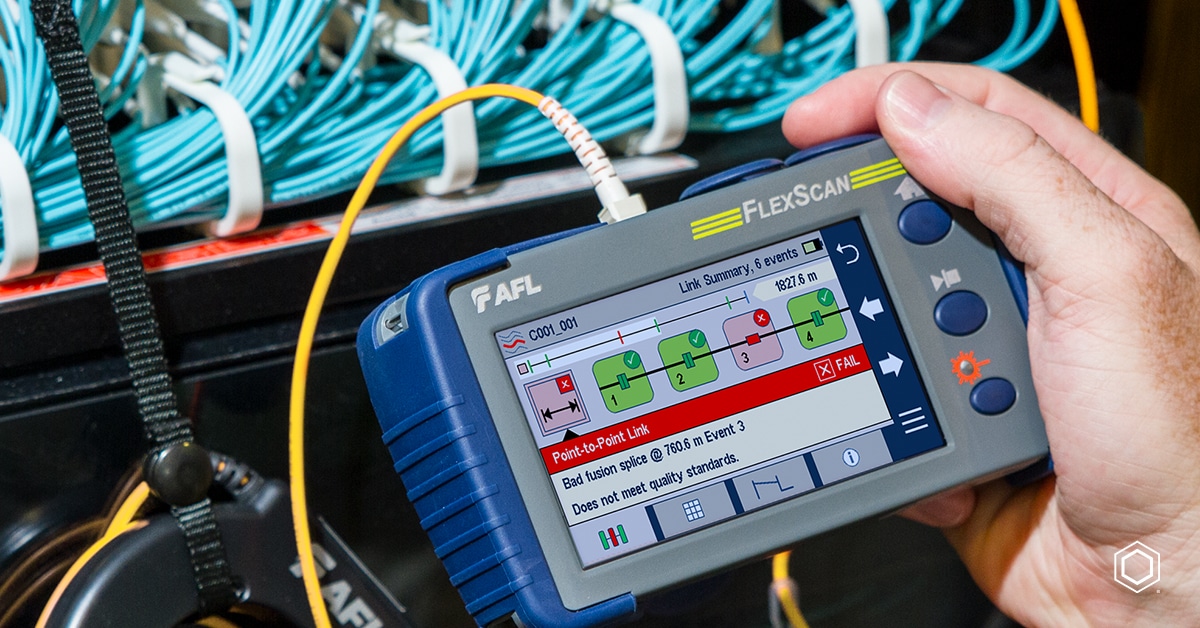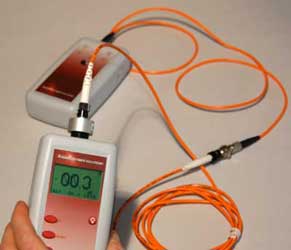Discover the Significance of Optical Fibre Screening in Modern Telecom
In the realm of modern telecoms, the relevance of optical fiber screening can not be overemphasized, as it offers as the backbone for guaranteeing network integrity and performance. What are the specific benefits that regular testing deals, and how might it shape the future landscape of telecommunications?

Comprehending Optical Fibre Testing
Optical fiber testing is a vital process in telecoms that guarantees the integrity and performance of fibre optic networks. This testing encompasses a series of treatments designed to review the physical and useful characteristics of optical fibres - ofda. Secret specifications assessed include optical power loss, data transfer capacity, and mistake location, which are necessary for preserving top notch communication links
The screening process normally entails making use of specific equipment such as Optical Time-Domain Reflectometers (OTDR) and Optical Power Meters. OTDRs are employed to determine and identify faults, entwines, and adapters within the fibre, while power meters measure the transmitted light signal toughness to establish performance.
In addition, screening is carried out at different phases, including throughout installment, maintenance, and troubleshooting, to make sure that the network meets industry criteria and operational demands. Compliance with criteria established by organizations like the International Telecommunication Union (ITU) and the Telecoms Industry Organization (TIA) is paramount.
Benefits of Regular Testing
Normal testing of optical fibers yields many advantages that dramatically improve network integrity and performance. One of the primary benefits is the early discovery of potential issues, such as breaks or degradation in the fiber, which can lead to expensive downtime if left unaddressed (optical fibre diameter analyser). By identifying these troubles proactively, telecoms providers can decrease solution disruptions and ensure regular connection for their consumers
Furthermore, regular screening assists to maintain the honesty of signal high quality. As optical fibers age, their performance can be impacted by elements such as ecological problems and physical tension. Regular assessments enable for the surveillance of signal loss and overall transmission effectiveness, making certain that the network operates at optimal levels.
An additional considerable advantage is compliance with market standards. Routine screening supports adherence to regulative needs, consequently reducing lawful and economic risks related to non-compliance. Additionally, it enhances the overall life-span of the fibre framework by facilitating prompt upkeep and repairs.

Usual Evaluating Approaches
Examining optical fibres uses different approaches to make certain the integrity and efficiency of telecoms networks. Among the most usual methods is Optical Time Domain Reflectometry (OTDR), which evaluates the whole size of the fiber by sending out a pulse of light and gauging the representations brought on by flaws or breaks. This technique supplies comprehensive info regarding the area and intensity of mistakes.
One more common technique is making use of Optical Power Meters, which measure the amount of light transmitted with the fiber. This technique assists determine the loss of signal stamina, ensuring that it satisfies industry requirements. Additionally, Visual Fault Locators (VFL) are employed to determine breaks or severe bends in the fibre by predicting a visible laser light into the wire.
Insertion loss testing is likewise critical, as it measures the loss of signal power Visit Website arising from connections and entwines within the network. In addition, making use of Polarization Mode Diffusion (PMD) screening evaluates the effect of fibre qualities on signal integrity.
Each of these approaches plays an essential role in preserving the performance and reliability of optical fiber networks, eventually adding to smooth telecoms procedures.
Impact on Network Performance
The honesty and efficiency of optical fiber networks directly affect overall network performance. In modern-day telecommunications, the efficiency of data transmission depends heavily on the quality of the optical fibers utilized. Any type of deterioration in the fiber's problem-- whether because of physical damages, contamination, or too much flexing-- can cause raised attenuation and signal loss, dramatically influencing information honesty and rate.
Regular optical fibre screening is necessary to determine and rectify possible concerns before they manifest as network failures or stagnations. Strategies such as Optical Time Domain Reflectometry (OTDR) and insertion loss screening allow the original source service technicians to gauge the efficiency of fiber links properly. These examinations not just evaluate the physical condition of the fibres however likewise ensure conformity with market requirements, consequently securing the network's reliability.
Furthermore, a well-kept optical fibre network adds to lowered functional costs and boosted client satisfaction, as end-users experience fewer disturbances and greater information prices. Ultimately, the focus on rigorous optical fiber testing methods functions as a foundation for maintaining durable telecoms infrastructure, guaranteeing that provider can satisfy the growing demands for transmission capacity and connectivity in today's digital age.
Future Trends in Examining
As we look in advance, developments in modern technology are poised to improve optical fiber testing in telecoms. The surge of automation and man-made intelligence (AI) is expected to boost the effectiveness and precision of screening processes. Automated testing systems can carry out extensive analyses with minimal human intervention, significantly reducing the capacity for errors and speeding up time-to-deployment.
Furthermore, the my site combination of artificial intelligence algorithms will certainly allow predictive maintenance, permitting network providers to foresee possible issues before they escalate right into failures. This aggressive strategy not just boosts network integrity however additionally maximizes functional prices.
Another arising fad is the development of mobile screening tools that supply real-time evaluation - optical fibre diameter analyser. These tools will certainly empower technicians to carry out on-site diagnostics swiftly, facilitating quicker resolutions and improving solution quality
The development of 5G networks better necessitates the evolution of testing techniques. As transmission capacity needs boost, traditional testing methods might no more suffice. Cutting-edge solutions such as optical time-domain reflectometry (OTDR) and progressed spooky evaluation will end up being essential in making certain the honesty and efficiency of high-speed links.

Final Thought
Finally, optical fiber screening is vital for guaranteeing the stability and integrity of contemporary telecoms networks. Normal testing techniques not just aid recognize potential problems such as signal loss and faults yet also add to boosted network performance and customer complete satisfaction. As the demand for seamless connectivity continues to expand, the adoption of innovative testing techniques will play an important function in maintaining top notch network standards and supporting the advancing landscape of telecommunications.